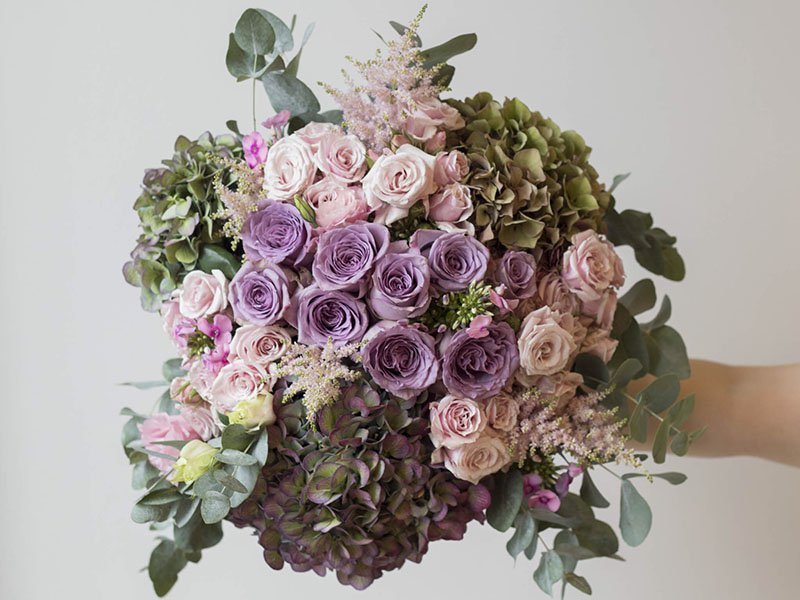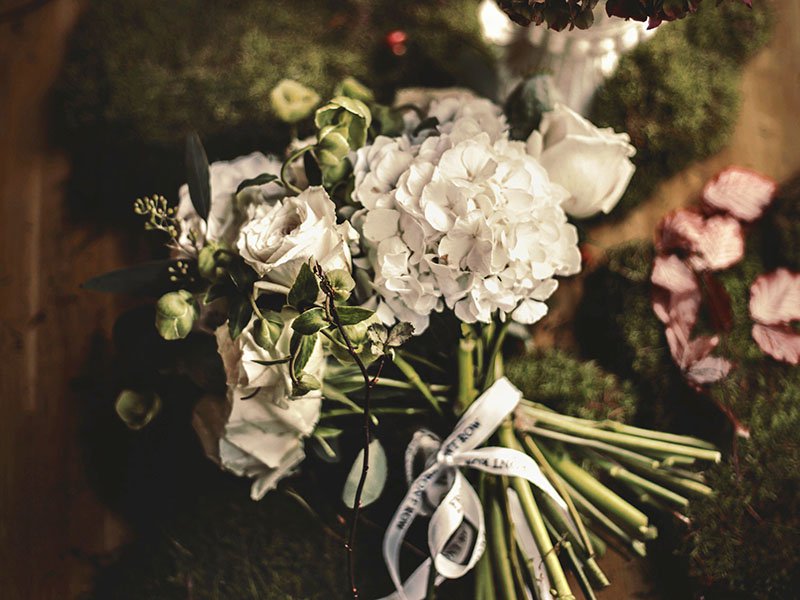How to Style Cut Flowers at Home
If you have the garden but need some inspiration for your cut flowers, we have the answers
If you have the garden but need some inspiration for your cut flowers, we have the answers
Fresh-cut flowers in the home are one of life’s greatest everyday luxuries. A well-dressed bouquet can lift a room as well as your spirits. Subscription services or trips to the florist are one thing, but if you have a well-pruned garden and want to turn your hand to arranging the blooms yourself, where do you start? Luxury Defined gets the answers from the experts, and identifies some florists you need to know.

1. Find your style
First things first. Is your style traditional or modern? Minimalist or maximalist? Orlando Hamilton from Front Row, a boutique florist in London’s Notting Hill, suggests considering the décor and the size of the room you’re dressing, as well as any event you might have planned.
“Large-headed flowers have a far greater impact in a big space, so you should consider that when dressing a larger space. Flowers with large heads, such as hydrangeas and lilies, work well in a big room,” Hamilton says. “I’m a big fan of dramatic eremurus or foxtail lilies, as they can look like fireworks in large displays.”

Related: How to Add Touches of Color to Any Room
Founded by Chinese fashion entrepreneur Wei Yue, Front Row has created displays for Dover Street Market, Browns Fashion, Elle Italia, Missoma, and a recent wedding at Claridge’s hotel. From their bright and airy store, they create bespoke arrangements for weddings, events, and private clients.
Vibrant orange tulips in a yellow room will create drama, while white roses will cool things down
With 25 years of experience between them, alongside excellent connections with flower markets in London and the Netherlands, the team regularly has the pick of the bunch when it comes to the rare and unusual, such as profoundly scented O’Hara roses, and lesser-seen British varietals such as forget-me-nots and clematis.
“Flowers are wonderful way to play around with the mood or feel of your space. Vibrant orange tulips in a yellow room will create drama, while white roses will cool things down.”
2. Go against the grain
For many years, floristry followed this distinctly traditional pattern: keep the flowers of similar color, texture, and size, and arrange in a neat, fanned-out display, in a vase befitting the size of your flower stems. Today, however, in part thanks to pioneers such as society florist Constance Spry (whose sparse, abstract arrangements made use of everything from seemingly mismatched flowers to dead leaves, grass, fruit, and even weeds), we’re looking at a whole new world of display.

WORM London is a small team of two whose wreaths and arrangements follow the Spry model. Their designs feature wild flowers and natural materials, often mixed with stunningly dark or light pastel blooms.
“For the first time in years, it feels like people are foraging again for food and plant life to bring indoors,” say Katie Smyth and Terri Chandler, the women behind WORM London. “Challenging yourself to make something from your garden brings such satisfaction, and a little bit of nature’s beauty into your home.”
3. Take inspiration from history
It’s possible that florists such as Spry and today’s pioneers were influenced by an even older school of thought: ikebana. Gaining popularity in Japan in the 15th century—originally as offerings left to Buddhist gods—ikebana arrangements celebrate the god in nature and the life cycle of nature itself. Usually based on a triangle form with a tallest point representing heaven, a low point to represent the earth and a middle focal point as the balance between the two, it is best explained as a search for balance between opposites.


Related: Discover Kyoto, Japan’s Old-World City of Culture
4. Experiment at home
When it comes to dressing your flowers at home, Orlando Hamilton suggests a mixed selection of vases to allow you to experiment with size, height, and dimension.
“Consider your home interior and whether you should be looking for vintage or modern vases. Scour thrift stores and flea markets as well as your local florist. A collection of bud vases is very useful and helps to make a table look pulled together.”

“They can be placed on a runner on a long table, alongside tea lights,” Hamilton says. “It’s worth having some vases in pairs, and fishbowls can be a great shape for displaying flowers that have a tendency to spread out—such as tulips and peonies.”
As for choosing what to cultivate, hydrangeas are extremely easy to grow in your home garden and are attractive both in displays and as a singular flower in a bud vase. Also easy to grow are dahlias, scabious, and zinnia—all on-trend again—with their dazzling variations in color. Most cut flowers should last seven to 10 days in a vase, though there are some exquisitely scented flowers with shorter shelf lives that are grown for their smell rather than their longevity.

5. Heed these tips of the trade
To keep flower arrangements looking bright and lively for longer, professional florists recommend making sure vases are as clean as possible to prevent any algae or bacteria from affecting water intake. Remove leaves that would rest below the waterline and cut stems at an angle to allow the maximum intake of water.
Refreshing the water every two to three days will also help to prevent build-up of bacteria and prolong flowers’ life. A drop of bleach or flower food, provided by a florist, can also help.

Not everyone has spare time to grow, pick and arrange their own flowers; here’s a curated collection of top florists in three of the world’s biggest cities:
New York
Little Flower School
Based in Brooklyn, this small store started life as an even smaller garden, from which founders Nicolette Owen and Sarah Ryhanen grew flowers and supplemented these with more from the local markets. They also run floral arrangement classes.
Emily Thompson
A favorite with the fashion and art worlds, Thompson’s unique creations—often towering and unexpected—are more akin to art installations, or Old Masters paintings.

Eric Buterbaugh
Buterbaugh’s bouquets of deeply pigmented roses with delicately hand-reflexed petals or lavish puffballs of pastel peonies, roses, and ranunculus are simple and stunning. He counts Dior, Valentino, Ferragamo, and Cartier as clients.
Moon Canyon
Creating floral arrangements mainly for weddings, Moon Canyon’s designs are tailored to fit each individual client. Using mostly vintage or autumnal color arrangements with tall grasses, ferns, leaves, and delicate or striking flowers and buds showcase nature at its best.

Front Row
This petite Notting Hill florist creates classical bouquets for fashion brands and local luxury clients as well as running floral arrangement classes. Their excellent relationship with local growers means they often have rare and unique plants in their shop.
Shane Connolly
The king of wild floral arrangements in London, Connolly also holds a warrant of Royal Appointment to HRH the Prince of Wales. Among the unique offerings, he holds workshops on how to create bouquets inspired by Dutch Old Masters paintings.
McQueen’s
Kally Ellis’s humble beginnings from a small store in Clerkenwell, London, bely the fact that her lavish bouquets have appeared at the Tribeca Film Festival and fashion shows in London.